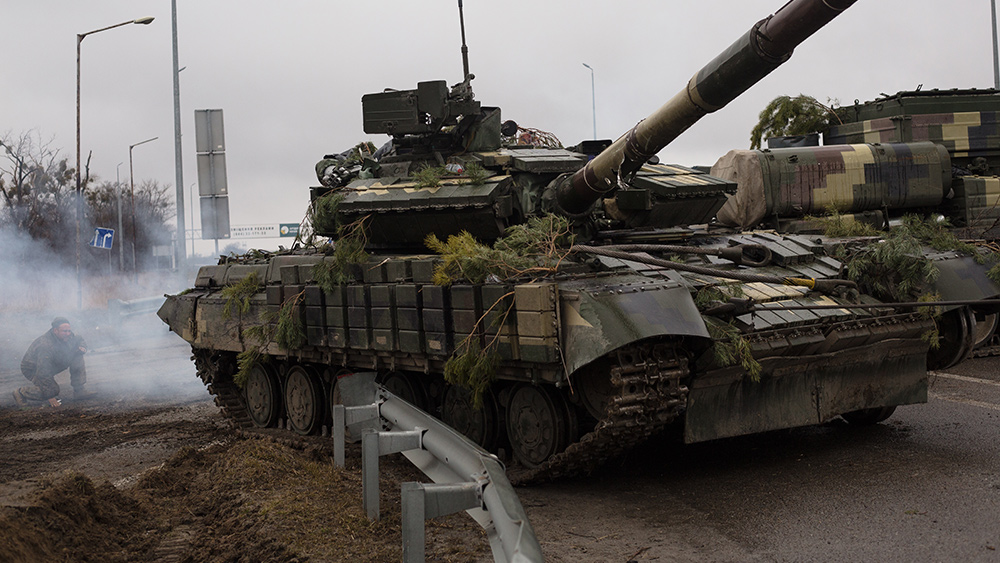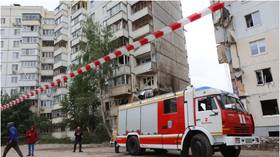Russia ramping up production of weapons, ammunition ahead of expected offensive

Since the onset of the conflict between Moscow and Kiev in 2022, there has been a significant surge in the production of weapons and ammunition in Russia, as revealed by Sergey Chemezov, the head of the defense conglomerate Rostec.
During a meeting with Russian Prime Minister Mikhail Mishustin, Chemezov disclosed that approximately 80 percent of the arms utilized by the Russian military in the conflict are supplied by Rostec.
Established in 2007 on the directives of President Vladimir Putin, Rostec encompasses over 800 research and production organizations within Russia's defense sector. Chemezov highlighted the remarkable increase in production across various military hardware categories compared to 2022.
For instance, tank production and refurbishment at Rostec factories surged by three-and-a-half times, while the manufacture of lightly armored vehicles tripled.
The production of self-propelled artillery pieces increased tenfold, and there was a fourteenfold rise in the output of towed guns. Additionally, the production of multiple rocket launch systems (MLRS) doubled.
Chemezov also noted significant escalations in the production of ammunition and munitions.
Rounds for tanks and infantry fighting vehicles saw a 900 percent increase, while artillery shells and MLRS munitions rose by 600 percent and 800 percent, respectively. Furthermore, there has been a surge in the production of unguided rockets for heavy flamethrower systems, with output tripling.
Amid the conflict, new types of equipment have been introduced, including TOS-2 heavy flamethrower systems capable of firing thermobaric warheads, Zemledeliye remote mine-laying systems, Krasnopol guided shells, Kub loitering munitions, and guided missiles for UAVs.
We are building the infrastructure of human freedom and empowering people to be informed, healthy and aware. Explore our decentralized, peer-to-peer, uncensorable Brighteon.io free speech platform here. Learn about our free, downloadable generative AI tools at Brighteon.AI. Every purchase at HealthRangerStore.com helps fund our efforts to build and share more tools for empowering humanity with knowledge and abundance.
Additionally, Rostec is collaborating with JSC Tactical Missiles Corporation (KTRV) to enhance standard aviation bombs by incorporating gliding modules and guidance systems. (Related: Russia confirms test launch of new, nuclear-capable ICBM.)
The utilization of glide bombs by the Russian Air Force has significantly enhanced their effectiveness, as noted by reports from the Washington Post and the Independent.
Last March, CNN reported that Russia is poised to outpace the United States and Europe in the production of artillery munitions, providing a significant advantage as anticipation builds for another Russian offensive in Ukraine later this year.
According to NATO intelligence estimates shared with CNN and sources familiar with Western efforts to arm Ukraine, Russia is currently manufacturing approximately 250,000 artillery munitions per month, equivalent to about three million annually.
In contrast, the collective capacity of the U.S. and Europe amounts to only about 1.2 million munitions annually available for shipment to Kyiv, as disclosed by a senior European intelligence official to CNN.
Funding for arming Ukraine has dried up
The disparity in production numbers has raised concerns among Western officials, who recognize the critical role of artillery munitions in the conflict between Russia and Ukraine.
With Russia currently firing around 10,000 shells per day, compared to Ukraine's daily output of just 2,000 shells, the imbalance in artillery capabilities is stark. This asymmetry is particularly pronounced in certain areas along the 600-mile front, according to reports from European intelligence sources.
The timing of this production shortfall is particularly precarious for Ukraine, as it faces a critical juncture in its war effort against Russia.
Amid financial constraints and Republican opposition in Congress, U.S. funding for arming Ukraine has dried up. Meanwhile, Russia has recently seized the Ukrainian city of Avdiivka and is perceived to have the upper hand on the battlefield, exacerbating Ukraine's challenges not only in terms of ammunition but also in terms of manpower shortages.
Despite receiving advanced military systems from the U.S. and its allies, such as the M-1 Abrams tank and upcoming F-16 fighter jets, military analysts assert that the outcome of the conflict will hinge largely on artillery capabilities.
Russia's intensified production efforts underscore its commitment to maintaining battlefield superiority.
Russian factories are reportedly operating at full capacity, with approximately 3.5 million Russians now employed in the defense sector, marking a significant increase from pre-war levels. Furthermore, Russia has been importing ammunition from countries like Iran and North Korea to supplement its domestic production.
Watch Russian forces exploring German Leopard-2A6 technology at a Moscow workshop.
This video is from The Prisoner channel on Brighteon.com.
More related stories:
Russia STRIKES Ukrainian military depot, destroying OVER 3,000 TONS of ammo.
Russia claims to have seized the initiative in Ukraine with significant territorial gains.
Russia flaunts Western military equipment CAPTURED from Ukraine ahead of Victory Day parade.
Sources include:



